For one thing, they’re fast. A look at how residential fire sprinkler heads are different from other sprinklers, why they were developed, and where to use them
In 1973, the National Commission on Fire Prevention and Control published a report entitled “America Burning.” It found that most deaths due to fire in the United States occurred in residential buildings—and those most likely to die in residential fires were young children and adults over the age of 65. This can be attributed to their need for assistance in exiting burning buildings as well as the reduced likelihood that they will hear smoke alarms immediately, if at all. In response to these findings, the report recommended that a fire sprinkler system be designed specifically for residential use.
Prior to this point, the primary focus of commercial fire sprinkler systems had been property protection. A new residential fire sprinkler system was to be designed with the primary purpose of saving lives. Installation and maintenance requirements of residential fire sprinkler systems were also designed to be simpler and easier than requirements for other fire sprinkler systems, with the overall goal of spurring much broader adoption and saving as many lives as possible.
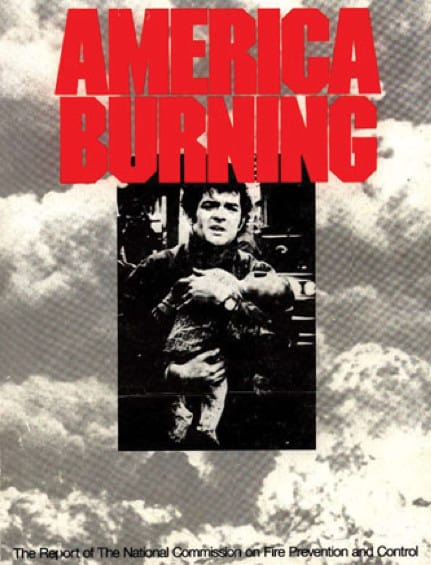
This recommendation led to the development of NFPA 13D: Standard for the Installation of Sprinkler Systems in One- and Two-Family Dwellings and Manufactured Homes. This standard defines an automatic sprinkler as “a fire suppression or control device that operates automatically when its heat-actuated element is heated to its thermal rating or above, allowing water to discharge over a specific area.”
Automatic sprinklers can be categorized as either standard response or fast response, depending on their response time index (RTI). RTI measures thermal sensitivity, or how quickly the sprinkler can absorb enough heat from its surroundings to cause it to activate. The lower the RTI, the faster the sprinkler activates.
There are four subcategories of fast response sprinklers—quick response, ESFR (early suppression, fast response), QREC (quick response, extended coverage), and residential fire sprinkler heads.
NFPA 13 defines a residential sprinkler as “a type of fast-response sprinkler having a thermal element with an RTI of 50 (meter-seconds)1⁄2 or less, that has been specifically investigated for its ability to enhance survivability in the room of fire origin, and that is listed for use in the protection of dwelling units.” Automatic sprinklers generally have RTIs between 35 and 250 m½s½, so you can see where residential sprinklers (50 m½s½ or less) fall on this spectrum.
Thus, while “automatic sprinkler” is a very broad category that includes all sprinkler types and performance objectives, “residential sprinklers” are specifically designed with a focus on life safety in the home. And that means they set off fast.
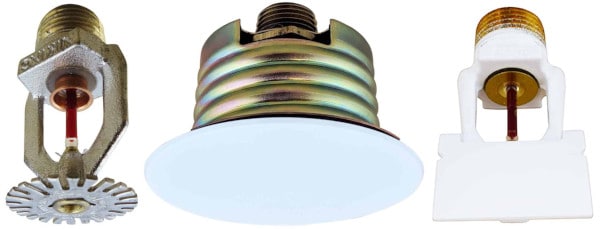
How a residential fire sprinkler head works
Most residential sprinkler systems are wet systems, where the sprinkler heads are joined to a network of water-filled pipes running throughout the building’s walls and ceilings. The sprinkler heads act as outlets and plugs that hold the water within the pipes. Each sprinkler head has a trigger, either a metal link that is soldered together or (standard in home sprinklers) a glass tube filled with a heat-sensitive liquid.
If a fire starts in the home, the air temperature will begin to rise. Once the temperature around the sprinkler head reaches a certain point, it causes the soldered metal link to break or the temperature-sensitive liquid in the glass tube to expand, shattering the tube. This allows a plug to drop away and water to rush out of the sprinkler head. The water is fanned around the room by passing through a “deflector” that creates an umbrella-type spray pattern. This spray pattern can vary a bit, depending on the sprinkler type.
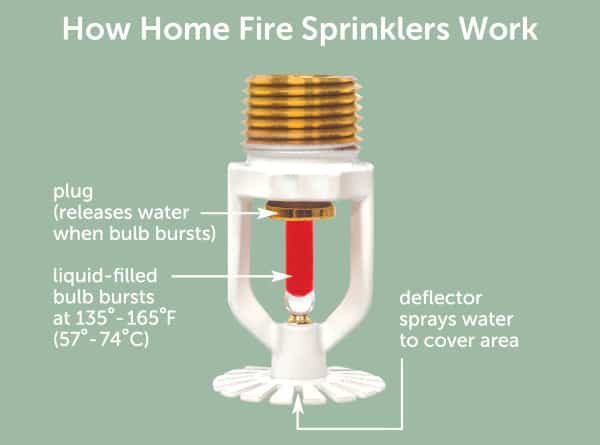
The temperature rating of the operating element in a residential fire sprinkler head indicates the temperature at which it will deploy, and the color of the bulb indicates the temperature. For example, a 155°F rated sprinkler will deploy when the red operating element’s temperature reaches approximately 155°F. However, the air temperature may need to be significantly higher than 155°F before the sprinkler’s operating element reaches that temperature.
The operating elements of fast-response sprinklers have a smaller mass than those of other sprinklers, which allows them to have a much smaller RTI—again, meaning they deploy much more rapidly.
To learn more about how a fire sprinkler’s thermal element works, check out this article.
The primary goal of residential fire sprinkler systems
This fast response is important because the primary goal of residential fire sprinkler systems is to prevent loss of life. Since survivability (“tenability”) is the primary focus, controlling the environment in the affected compartment (often, a room in a home) is a key objective.
A residential fire commonly involves modern furnishings that have substantial amounts of plastics and other synthetic material that can cause fires to develop more quickly than in the past, along with deadly smoke. Modern homes also often use lightweight construction materials that “burn quicker and fail faster.” Carbon monoxide levels and heat can rise quickly while oxygen levels drop, and a quickly spreading fires can make escape impossible and/or cause flashover: “the near-simultaneous ignition of most of the directly exposed combustible material in an enclosed area.”
Watch this simulation of flashover in a home from the Oak Ridge Fire Department:
By activating early and throwing water onto the upper levels of walls, residential sprinklers can keep the compartment tenable and buy precious time for occupants to escape.
Residential buildings may also have a more limited water supply than commercial or industrial buildings. NFPA 13D requires residential sprinkler systems to have a water supply of at least 10 minutes, which the technical committee responsible for writing the standard has deemed enough time for occupants to evacuate a small residential building. This means that fires that aren’t controlled or extinguished within that 10-minute time period may grow quickly if the water supply is exhausted before firefighters arrive. Thus, the sooner the sprinklers are activated to control the fire, the better.
Along with having operating elements with a smaller mass than other types of sprinklers, residential sprinklers also have a special water distribution pattern. Because combustible furnishings such as sofas and curtains are often placed against the walls in homes, residential sprinklers must provide even coverage, especially to walls. Curtains, in particular, are often hung quite high, so it’s important that residential sprinklers wet both the upper and lower parts of the walls. This prevents the fire from spreading upwards and also cools its emitted gasses, which tend to rise with heat and can be highly flammable. If these gasses, such as carbon monoxide, accumulate just below the ceiling and combust, deadly flashover can occur.
Statistics compiled by NFPA show that fire sprinklers reduce the rate of residential fire deaths by almost 80% while lowering property damage by as much as 70%. So, even though property protection is a secondary goal for residential sprinkler systems, they have also been proven to significantly lower fire damage in homes.
Because sprinkler systems are so effective at preventing deaths by fire, NFPA would like to see them installed in as many residential buildings as possible. To this end, residential fire standards are specifically designed to make installing residential sprinkler systems as economically viable as possible. This is partially accomplished by the wide range of system types that can be used, including standalone and multipurpose systems—the latter of which integrate with home plumbing—and the allowed use of a less-expensive thermoplastic pipe.
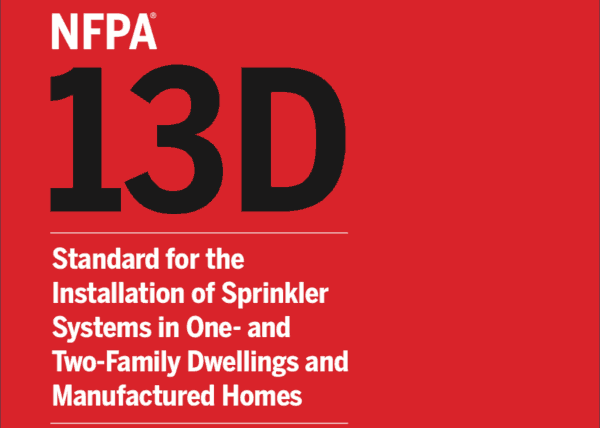
A quick review of NFPA 13D
NFPA 13D is a design and installation standard, not a code. This means that it covers how residential sprinkler systems are to be designed and installed as well as tested, inspected, and maintained in jurisdictions where they are required.
For residential sprinkler installations, NFPA 13D recommends that the entire residence be sprinklered, with some exceptions (which we’ll detail in a second). The standard requires that the sprinkler system’s water supply and piping be sized to provide the required water discharge flow rate to the two sprinklers in the affected compartment with the greatest demand.
From the 2019 edition of NFPA 13D
3.3.38 Compartment. A space completely enclosed by walls and a ceiling. Each wall in the compartment is permitted to have openings to an adjoining space if the openings have a minimum lintel depth of 8 in. (200 mm) from the ceiling and the total width of the openings in each wall does not exceed 8 ft (2.4 m). A single opening of 36 in. (900 mm) or less in width without a lintel is permitted where there are no other openings to adjoining spaces.
If each of the individual compartments in a home can be protected with a single sprinkler, for example, then a single sprinkler can be calculated in the design. In contrast, if the largest room has, say, 10 sprinklers in it to cover such a large space, the water supply and piping would be designed to assume that up to two sprinklers will activate.
The NFPA 13D and NFPA 13R: Automatic Sprinkler Systems for Residential Occupancies Handbook clarifies this requirement:
The size limits (i.e., height and area) of homes is not addressed by NFPA 13D. The philosophy is that two sprinklers will be able to control a fire in such a manner to prevent flashover in the room of origin for a long enough time to allow occupants to escape; therefore, the size of the home is not considered to be a concern or limiting factor.
Although NFPA standards recommend installing sprinklers in all areas of a residence, they do permit the omission of sprinklers in certain spaces where statistics indicate that few deaths by fire occur, such as bathrooms, closets, pantries, garages, attics, and concealed spaces. NFPA 13D, section 8.3 details conditions that must be met for these spaces to be omitted.
Allowing these spaces to be un-sprinklered helps lower the overall cost of installation for residential fire sprinkler systems. That said, certain state or local governments may require some of these areas to be covered by sprinklers—so be sure to consult with your local fire code and authority having jurisdiction (AHJ) to be sure.
Quick-response high-temperature sprinklers (rather than residential sprinklers) are permitted in areas of a home like mechanical closets, saunas, and steam rooms. Unlike residential sprinklers, quick response sprinklers have not been evaluated for their ability to meet the tenability criteria found in residential sprinkler testing standards. For this reason, quick response sprinklers can only be used in some specifically identified spaces for residential sprinkler installations. Some of these spaces, such as mechanical rooms, are unoccupied, so life safety is not as great of a concern. Other areas, such as saunas, may require higher temperature ratings that are not currently available with residential sprinklers.
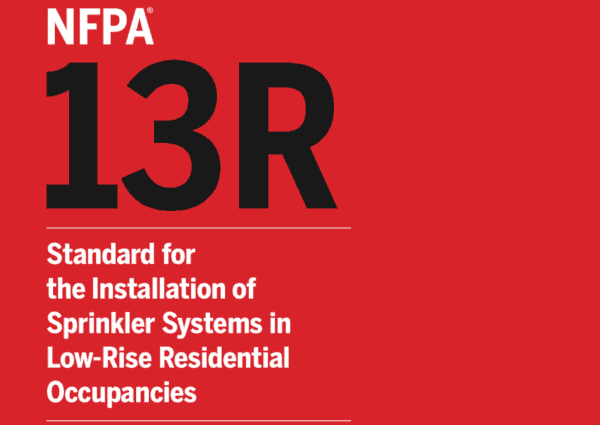
NFPA 13R: Developing a standard for low-rise residential buildings
The first edition of NFPA 13R: Standard for the Installation of Sprinkler Systems in Residential Occupancies up to and Including Four Stories in Height, adopted in 1988, was developed to bridge the gap between NFPA 13D and the commercial sprinkler standards of NFPA 13. Its purpose was to encourage owners of low-rise residential building to install sprinkler systems by making this installation more affordable.
Buildings that may qualify to use the NFPA 13R standard can include apartment buildings, lodging/rooming houses, board and care facilities, and hotels, motels, and dormitories that are four stories or less, meet certain height requirements, and can be categorized as a residential occupancy (or in some cases, depending on the model fire or building code that applies, multiple occupancies). The residential portions of pedestal/podium style buildings may qualify to use 13R standard as well.
Because buildings containing three or more residences are deemed to have a higher risk of fire (due to the higher number of occupants) and an increased difficulty of evacuation, the NFPA 13R standard is somewhat more stringent than NFPR 13D—among other things, it requires that the water supply and pipe sizing be based on the ability to provide the required water discharge flow rate to four sprinklers in the affected compartment with the greatest demand. Like NFPR 13D, NFPR 13R allows for sprinklers to be omitted from certain spaces where statistically few deadly fires start, but the qualifications for these spaces are somewhat different. They can be found in NFPR 13R, section “6.6 Location of Sprinklers.”
Choose the right residential fire sprinkler heads and system components
Residential systems require a range of components besides residential fire sprinkler heads. These components can vary depending on the specific type of system to be installed and the water supply source and can include pipes, water pumps, pressure tanks, etc. These parts must be compatible with residential construction techniques and must meet any other requirements set forth in either NPFA 13D or NPFA 13R.
Residential fire sprinkler heads can be classified into three different categories: upright (though these are uncommon in homes), pendent, or sidewall—and pendent and sidewall can be concealed or exposed. They also have one of two temperature ratings: ordinary or intermediate, the latter of which are used in areas routinely subjected to higher heat.
QRFS offers a wide range of residential fire sprinklers and components, including fire sprinkler cover plates, escutcheons, pre-assembled residential risers, and more.
If you can’t find the parts or equipment you’re looking for or you’re not sure what part goes with what, contact us at +1 (888) 361-6662 or email support@qrfs.com.
This blog was originally posted at blog.qrfs.com. If this article helped you learn about residential fire sprinklers, check us out at Facebook.com/QuickResponseFireSupply or on Twitter @QuickResponseFS.


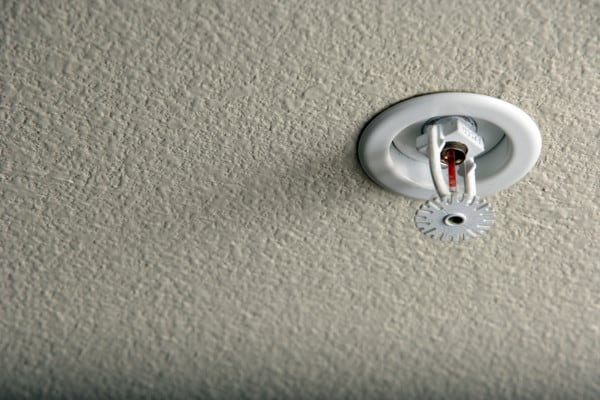
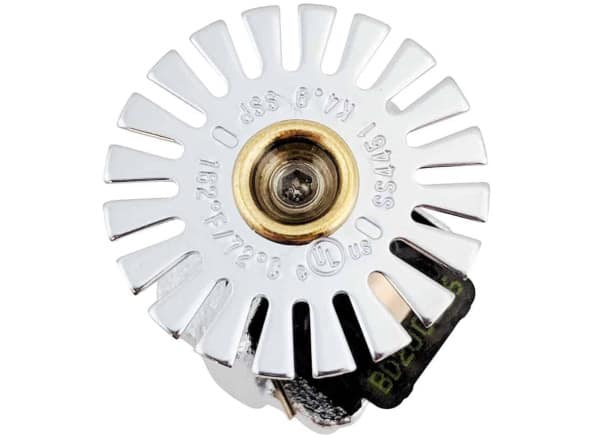
Do you sell enhanced fire sprinklers that would pass the California Fire Code? May need in order to build a single family residence in Oakland, CA. Please provide pricing and product specifications / performance metrics.
Mark — We are not aware of “enhanced” sprinklers designed with any enhancements specific to CA Fire Code. Various areas in CA may require sprinklers in *additional residential spaces* that are not mandated in NFPA 13D, such as sprinklering garages, but the essential performance characteristics (“listings”) of sprinklers — sprinklers which are used based on a specific system design — should remain consistent with other areas of the country.
Please contact a qualified sprinkler system designer to understand which heads are called for in the space. And whatever you need when you get those specs, QRFS either carries them online or can get them if you contact us with the requirements.